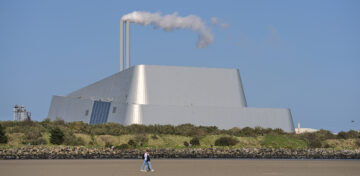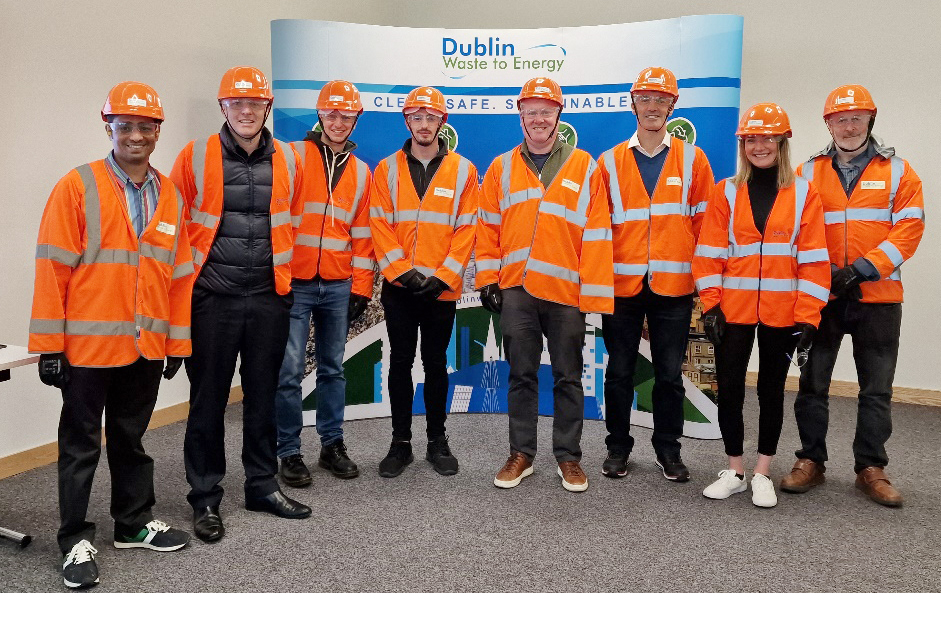

WASTE MANAGEMENT
Dublin’s Iconic Waste to Energy Facility
By Leon Hayes, COO Superfy, 30 March 2023

An Insider’s Visit To Dublin’s Iconic Waste-To-Energy Facility
Recently our team at Superfy in Dublin had the pleasure of a detailed site visit at the Dublin Waste-to-Energy Facility.
Coming from Australia, where W2E is in its infancy, it was incredible to get behind the scenes and up close and personal with the waste facility!
Dublin, the capital city of Ireland, generates an enormous amount of waste each day. The Dublin Waste-to-Energy Facility is a state-of-the-art plant that helps manage the city’s waste in an environmentally friendly manner. This article will provide an overview of the facility and its benefits to Dublin’s waste management system.
The Dublin Waste-to-Energy Facility, also known as the Poolbeg Incinerator, is located on the Poolbeg Peninsula about 5 km east of Dublin city center. The facility is operated by Covanta, a leading global provider of sustainable waste management and renewable energy solutions. The facility has been designed to manage up to 600,000 tons of residual waste per year, which is equivalent to about one-third of the waste generated in Dublin annually.
The facility operates by using a combustion process to generate electricity. Waste is delivered to the facility, where it is incinerated at a high temperature of around 1,000°C. The heat generated during the process is used to produce steam, which drives a turbine to generate electricity. The electricity generated by the facility is then exported to the national grid, where it is used to power homes and businesses across Ireland.

The facility is also designed to minimize its environmental impact. The combustion process produces emissions that are carefully monitored and controlled to ensure that they meet strict European Union (EU) environmental standards. The facility uses state-of-the-art technology to remove harmful pollutants from the emissions, including nitrogen oxides, sulfur dioxide, and heavy metals. The facility also includes a flue gas cleaning system that removes particulate matter, ensuring that emissions are as clean as possible.
In addition to generating electricity, the facility also produces heat, which is used to supply district heating to the local area. District heating is a system that provides heat to multiple buildings from a centralized source. This reduces the need for individual boilers and heating systems in each building, reducing energy consumption and greenhouse gas emissions.
The Dublin Waste-to-Energy Facility has significant benefits for Dublin’s waste management system. The facility reduces the amount of waste sent to landfill, which has a range of environmental benefits. Landfill sites can release harmful greenhouse gases such as methane, which contribute to climate change. They can also contaminate groundwater and pose a risk to human health. By diverting waste from landfill, the facility helps to reduce these risks and minimize Dublin’s environmental impact.
The facility also has economic benefits. The energy generated by the facility is sold to the national grid, providing a source of income for the facility and reducing Ireland’s dependence on fossil fuels. The facility also creates jobs, with over 100 people employed at the facility, and further employment generated through the supply chain.
However, the facility has not been without controversy. Some residents and environmental groups have raised concerns about the environmental impact of the facility, particularly regarding emissions from the combustion process. There have also been concerns about the long-term sustainability of the facility, with some arguing that it could discourage efforts to reduce waste and promote recycling.
When living in Dublin, I lived about 8km from the facility and saw it each day on my run and route to work.
The building is certainly impressive and with is modernist, architectural design I feel considers the local environment and visual impacts.
One of the more impactful considerations I found was that Dublin householders actually can choose their waste collector, much like we choose our energy supplier or telco supplier around the world… more on that next week…but for this post it actually meant that my personal house hold was much more aware and considered in which waste goes in which bin… for the record I had 4 different bins at my property.
The Dublin Waste-to-Energy Facility is a vital part of Dublin’s waste management system. It helps to reduce the amount of waste sent to landfill, minimize environmental impact, and generate renewable energy. The facility is designed to meet strict environmental standards, and its emissions are carefully monitored and controlled. While there have been concerns about the facility, it provides a necessary solution to Dublin’s waste management needs, and its benefits are likely to continue for many years to come.
What are your thoughts on W2E facilities potentially coming to your neighbourhood?